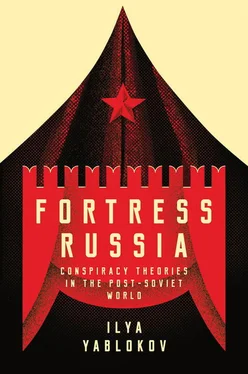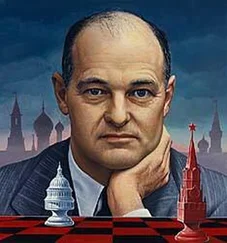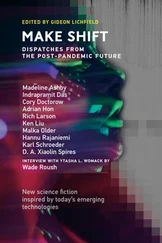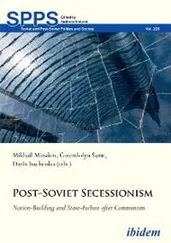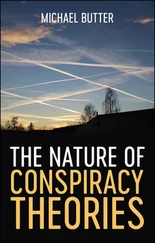The importance of regular and fair elections cannot be overestimated. They guarantee political stability, and the peaceful renewal of the positions of the elites; they enable the interests of various social and political groups to be expressed; and they help to solve political crises. Furthermore, they provide citizens with the means of changing the ways in which political, economic and social policies are carried out (Przeworski, 2015). Gorbachev’s reforms and the first free elections in the USSR, in 1989, had a significant impact on the country’s political development. All the same, free elections posed new challenges to the citizens of these countries, and, even more so, to the political elites. As McFaul and Petrov note (2004), during the 1990s, the Russian political elites managed to reduce the uncertainties associated with competitive elections and learned how to use particular political tools to preserve their leading positions, while at the same time sustaining the public image of the country as a democratic state. Attempts by the authorities to weaken the electoral system, both on the federal and regional levels, were successful both in the 1990s and the 2000s (Ross, 2009). As a result, by the 2010s, the Russian electoral system had become a loyal instrument in the hands of the ruling elites (White, 2011).
The electoral period of 2007–8 was particularly crucial for the Kremlin. The parliamentary and presidential elections, which were to take place in December 2007 and March 2008 respectively, were intended to ensure Putin’s political future after the expiry of his second term in the office. Consequently, they were of enormous importance to the country’s political establishment. The pre-election period coincided with turbulent changes in the CIS countries, where former political elites lost their positions, in some cases because of electoral defeat, in others of post-electoral opposition campaigns. Claiming that these changes were orchestrated by Washington, Russian political elites articulated the idea of a ‘Western plot’ to undermine Russian stability and sovereignty, specifically using elections. This concept became central both in the 2007 parliamentary election campaign, and in the 2011–12 parliamentary and presidential campaigns. By the next electoral period, in 2016, the Kremlin had no need for a massive popular mobilization around conspiracy theories, since the Ukraine crisis and the Crimean annexation were doing that job.
The electoral periods in post-Soviet Russia have provided the opportunity for the revitalization of mythmaking. Wilson (2005) has demonstrated the pivotal role played by political technologies in gaining a desired election result, and outlined the various methods by which public opinion is manipulated. Other experts have focused on the Russian elections and have explored the ways in which other candidates fall victim to character assassination, locating and analysing this phenomenon within the Russian electoral context (Sigelman and Shiraev, 2002; Samoilenko and Erzikova, 2017). Surprisingly, the role played by conspiracy mythmaking in Russian elections has been neglected by scholars. This chapter aims to fill this gap, focusing precisely on this aspect of the two electoral campaigns. The conspiracy narratives can be found at the heart of the popular mobilization campaign, and were used to justify repression against any potential rivals.
The transition of power to a carefully chosen successor, and maintaining a central position for Putin in the political system, became the main goals of the pre-electoral period (Furman, 2007). As Henry Hale suggests, in the post-Soviet world political regimes are very dependent on patrons who create networks which function as the backbone of these regimes (Hale, 2015). Preserving the patrons means sustaining the power of these networks; accordingly, in crisis situations there are determined attempts to ensure that these networks survive. After people in Ukraine refused to elect a pro-Russian candidate in their presidential elections, pro-Kremlin spin doctors and politicians spent a great deal of time and resources establishing an image of Putin as the only viable national leader. Through the publication of books and aggressive media campaigns they depicted Putin as the keystone of Russia’s national independence and economic stability.
Since the realization in the late 1990s that anti-Western conspiracy theories were a useful tool for public mobilization, their development became a priority for pro-Kremlin intellectuals. The two years in which ‘sovereign democracy’ had been used as an ideological framework were enough to prepare the arguments which would ensure that Putin remained in power after 2008. By the beginning of the electoral season in 2007, the Kremlin had at its disposal a set of conspiratorial ideas with which to undermine the positions of its opponents, and instruments with which to promote these ideas among Russian citizens. The parliamentary elections which were held on 2 December 2007 served as a form of referendum in support of Putin’s policies and of the United Russia Party, in which Putin took the position of chairman. The pro-Kremlin pre-election campaign paid particular attention to the supposed subversive actions of the opposition, which consisted of United Russia’s political opponents and international observers, whose statements could undermine the legitimacy of the regime in the eyes of foreign observers. A ferocious media campaign, as well as changes to the state legislation, marginalized the opposition and helped the pro-Putin party to secure a key political position.
After completing two consecutive presidential terms, Putin continued to hold a leading position on the political scene and became more than just a politician (Cassiday and Johnson, 2010). By the crucial electoral period of 2007–8, the Kremlin had devoted much effort to turning the president into a popular icon (Goscillo, 2011). Pictures of a bare-chested Putin riding a horse, videos of young women declaring their love for the president, which went viral on the Internet, and the specific targeting of women as a potential support group, was a deliberate Kremlin policy which was aimed at creating the nucleus of Putin’s electorate (Pavlovskii, 2012). This focus on gender and masculinity, as Valerie Sperling notes (2015), has been one of the Kremlin’s strategies of legitimization both of Putin and his regime. A poll conducted by the Levada-Centre in July 2007 revealed that 52 per cent of respondents would support Putin in 2012 if he ran for another presidential term (Levada-tsentr, 2007). This extensive level of support, in part achieved through manipulative media coverage, was highlighted during the 2007–8 electoral campaign, in which Putin was represented as the main defender of the Russian state (Baraulina, 2006, pp. 24–7; Hutchings and Rulyova, 2009, pp. 29–56).
As Dugin (2007) claimed, among Putin’s biggest achievements in the 2000s were the restoration of the country’s territorial integrity, the prevention of Russia’s collapse, and her newly regained reputation as a world power ‘which everybody else takes into account’. Pro-Kremlin spin-doctors further attempted to attach global significance to Putin by stressing his role in resisting US hegemony. Shortly before the elections, Pavlovskii (2007) contended that the Russian global mission was not the country’s ‘return to former greatness’, but its successful containment of the USA, which only Putin was able to achieve:
You cannot invent a global mission, but you can choose it out of a short list of real, eagerly sought goals. Putin did it. In the world of the simultaneously destructive and utopian ‘Bush doctrine’, the demand for resistance to the US is impossible. However, there is a global demand for this resistance…. The containment of the US is Russia’s function for the next few years. Most of humankind, including its Western part, will tacitly support all Russian actions in this sphere even without openly expressing public support. Putin found a unique niche of unarticulated global demand for particular policies and occupied it. (Pavlovskii, 2007)
Читать дальше
Конец ознакомительного отрывка
Купить книгу
